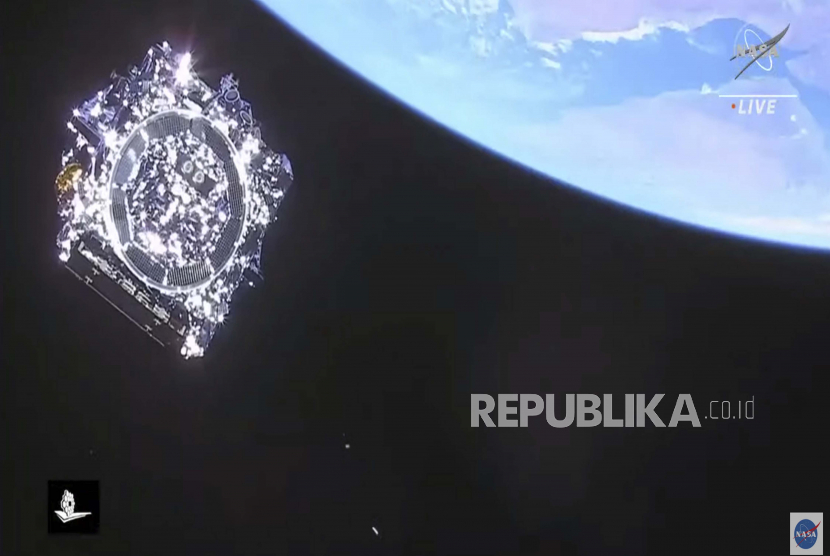The James Webb Telescope suffered four unexpected micrometeorid strikes.
REPUBLIKA.CO.ID, MARYLAND — The James Webb Space Telescope recently experienced a micrometeoroid attack on one of its 18 main mirror segments. Engineers state the impact of micrometeors this causes minimal damage.
The Webb Telescope is the most powerful space observatory ever used. The telescope will soon begin peering into space in an attempt to learn more about the origins of the universe.
This multi-year, US$10 billion mission is the result of a partnership between the American Space Agency (NASA), the European Space Agency (ESA), the Canadian Space Agency (CSA) and has been in the works for decades.
While it’s normal for the spacecraft to experience an impact event like this, NASA noted that the micrometeoroid that hit the telescope between May 25 and May 27 was larger than it had expected when modeling the event before the mission’s December 2021 launch.
Analysis of the damage to the mirror segment is in progress. However, NASA says early indications are that the telescope is continuing to operate at a rate that exceeds all mission requirements despite a slightly detectable effect in the data.
Paul Geithner, deputy technical project manager at NASA’s Goddard Space Flight Center, said he knew Webb had to deal with the space environment. The space environment includes harsh ultraviolet light, charged particles from the sun, cosmic rays from exotic sources in the galaxy, and occasional attacks by micrometeoroids in the solar system.
“We designed and built the Webb with optical, thermal, electrical, mechanical performance margins to ensure it can carry out that ambitious science mission after so many years in space,” said Geithner. .
The telescope, which is now in its sights about a million miles from Earth, has been able to adjust the affected segment in such a way that it eliminates some of the distortion caused by the micrometeoroid impact.
To avoid such an attack, NASA could instruct the spacecraft to perform a protective maneuver that moves the telescope’s fine optics away from a known meteor shower heading toward it.
However, NASA noted that the recent impact was an “unavoidable coincidence” that was not part of a meteor shower. NASA has formed a special team of engineers to examine whether there is a way that could help the spacecraft reduce the effects of future micrometeoroid impacts at this scale.
“Since launch, we have had four smaller measurable micrometeoroid strikes that are consistent with expectations and this one recently was larger than our degradation prediction forecast. We will use this flight data to update our analysis of performance over time as well as develop operational approaches to ensure we maximize Webb’s imaging performance as best we can for years to come,” said Lee Feinberg, Webb optical telescope element manager at NASA Goddard. .
The size of the micrometeoroids was definitely a surprise to Webb’s team. However, the design of the telescope has ensured that the telescope can continue to function as expected.
The mission team will release the telescope’s first images in July as scientists attempt to use the powerful observatory to unlock some of the universe’s secrets.


